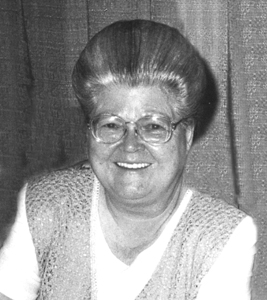NEWS FROM THE HILLS
 The aromatic fragrance of sassafras tea permeates every corner of the house, potpourri that is unmatched anywhere. It is the very breath of early springtime, and a spring tonic that is welcomed by many mountain folk.
The aromatic fragrance of sassafras tea permeates every corner of the house, potpourri that is unmatched anywhere. It is the very breath of early springtime, and a spring tonic that is welcomed by many mountain folk.
Although sassafras has been officially banned as a carcinogen (causing liver cancer in rats) we have always brewed and drunk this delicious tea in the spring. One of our Clay County men told me that he had drunk sassafras tea daily since he was a young boy. He died at the age of 95.
The tea has been used since early colonial times. Most of the native tribes of the eastern United States used sassafras for various ailments. They drank an infusion of sassafras roots to lower fever and promote the eruption of measles.
Rural doctors commonly administered sassafras tea to treat high blood pressure and to promote perspiration in colds. Mom always told us it was a “blood purifier” and spring tonic. It is a lot more palatable than sulphur and molasses that some families used.
The essential oil from the root bark of sassafras has been scientifically proven to have antiseptic properties and when applied externally, as in folklore use, would have such an effect.
Daddy used sassafras leaves to draw out a “bealing,” or bring stone bruises to a head. The leaves are gummy and mucilaginous when mashed with a heavy spoon, and they make an excellent poultice.
We knew nothing of the medicinal properties of sassafras, but drank the tea for its highly aromatic and flavorful taste. There is nothing any better than a cup of the dark red, robust tea.
The roots must be scrubbed clean of soil and loose debris, rinsed carefully, and placed in a large kettle filled with fresh water. I used to parboil the roots and pour off the first water, until I learned it wasn’t necessary. Simmer, adding more water as needed, until the tea reaches the desired strength. Then enjoy a cup of pure springtime.
I received the most interesting letter from David Johnson of Hickory, NC, who sent the background of the patent medicine, “Golden Relief.” His grandfather, Luther W. “Doc” Johnson manufactured and sold the medicine throughout the hills of West Virginia.
He prepared his medicines in a small laboratory in the back of his home in Charleston, and traveled untold miles over muddy roads throughout the hollows and hills of West Virginia with his grip of medicine. He made “Thironate,” a vitamin and iron tonic, and also liniment to relieve aches and pains. His best seller was probably “Golden Relief” for croup, pneumonia, and all throat and lung affections. It worked.
Many of the old home remedies had merit, but there were some that were pure superstition. Did you ever hear of blowing in a baby’s mouth for thrush? (A lot of folks called it “thrash.”) If you could find someone who had never seen their father, and have them blow in the afflicted baby’s mouth, it would be cured. (Poor babies!)
Carolyn Knight from Marlinton sent her great-grandmother’s remedy for arthritis. She would soak a piece of flannel cloth in castor oil, wrap it around the aching area, and wrap heat around it. She says to keep the flannel in a closed container, and freshen up with castor oil as needed. She uses plastic wrap over the flannel, and then applies a heating pad to the area.
Since this is the cold and flu season, my granddaughter asked for some home remedies for the sniffles and coughs that has been making its rounds. One of the most useful herbs that we have found is yellow root, or goldenseal. It makes an excellent gargle for a sore throat and also heals mouth sores.
Recent scientific findings have proven that the dried rhizome possess cytotoxic activity, indicating it is useful against viruses. I would hate to go into the winter without a supply of the dried roots. Use about one-half teaspoon of the dried root in a pint of water, and boil slowly for half an hour. I keep the tea in the refrigerator to be used as needed.
Herbal teas such as ginger and peppermint are soothing and will induce sweating to break up a cold. Catnip is another good herbal tea, but the leafy, flowering tops should be gathered in August. It was once widely used for colic in babies and stomach pain in children. An infusion of one ounce of catnip to a pint of boiling water is recommended, and two tablespoons for adults (two teaspoons for children) is sufficient.
There is a request from John Slaughter, Jr. of Charleston who is looking for the words to a poem he and his sisters learned in the early grades of a two-room country school in Birmingham, Alabama. They could remember four lines of the poem, which went:
Where we walk to school each day
Indian children used to play
All the trees were very tall
And there were no streets at all.
Mr. Slaughter says, “This fragment has stuck in my head and I would dearly love to find the whole thing and share it with my sisters.” Does anyone know the rest of it?
Mr. Slaughter here you go!
Indian Children
by Annette Wynne
Where we walk to school each day
Indian children used to play —-
All about our native land,
Where the shops and houses stand.
And the trees were very tall,
And there were no streets at all,
Not a church and not a steeple —-
Only woods and Indian people.
Only wigwams on the ground,
And at night bears prowling round —-
What a different place today
Where we live and work and play!
- Celebrating 20 Years Of Community At The Stand - April 12, 2024
- First Positive Case Of Chronic Wasting Disease In Indiana - April 12, 2024
- Southwest Allen County Schools Embark On Major Tree Plantings - April 12, 2024


